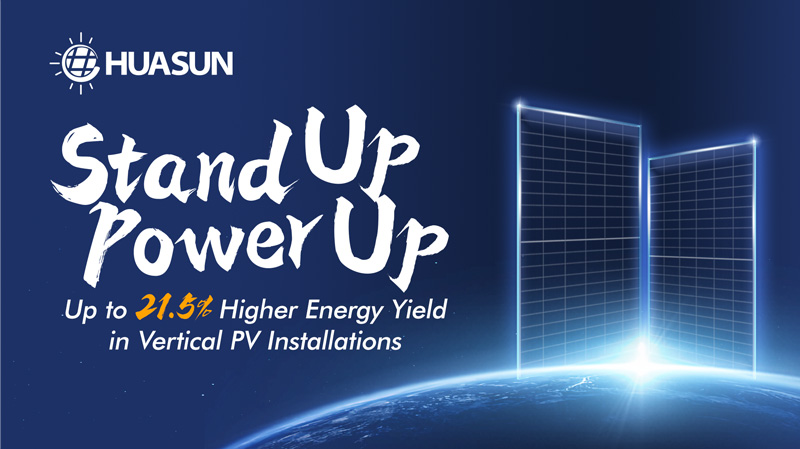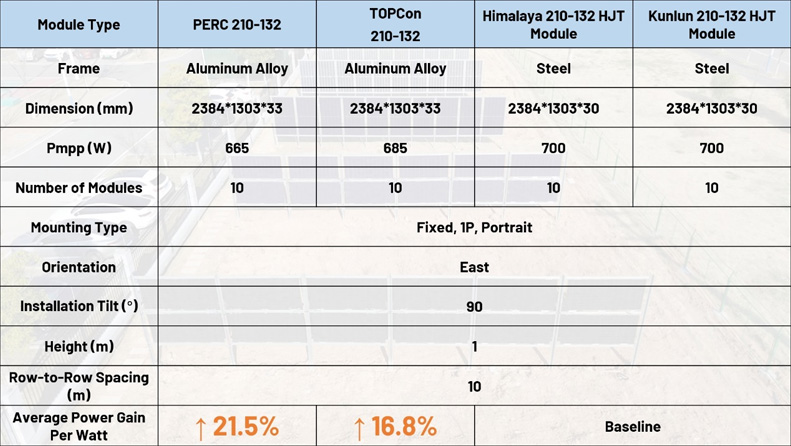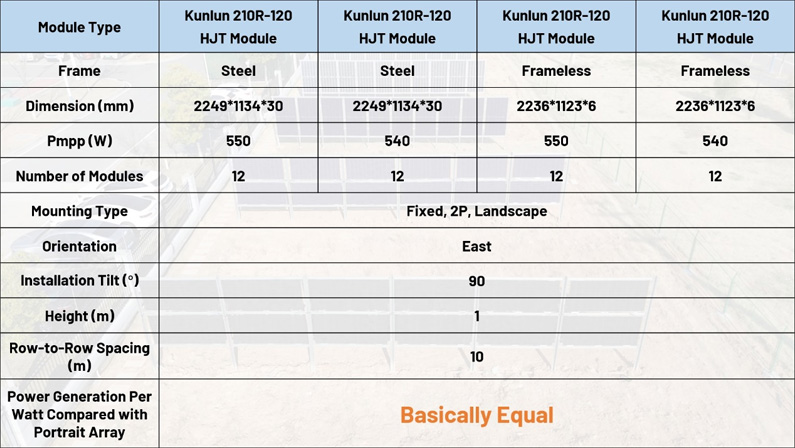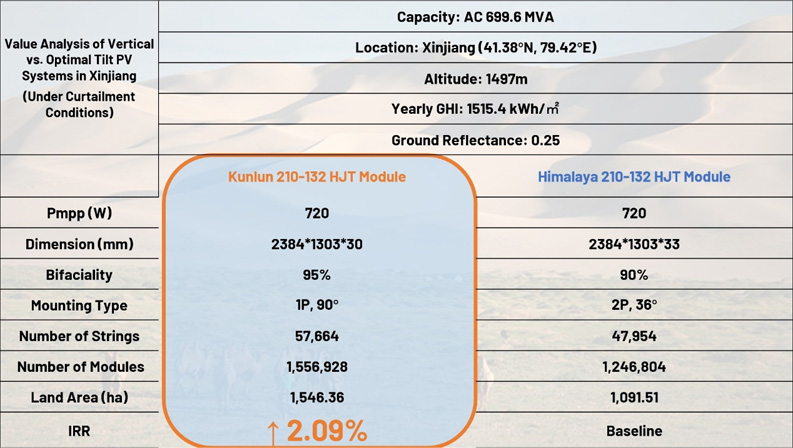en
The growing demand for vertical PV systems is driven by market-based pricing and higher investment returns. These systems maximize land use, support large-scale solar project deployment, and unlock new opportunities for PV+ applications. Huasun’s Kunlun series vertical heterojunction (HJT) solar modules excel in diverse environments, from deserts and farmlands to urban buildings and highways, driving innovation and efficiency in solar energy.

01 Exceptional Performance: 16.8%+ Power Gain
– PERC vs. TOPCon vs. HJT

At Huasun’s blueberry plantation demonstration site in Xuancheng, Anhui, East China, a vertical PV installation with ten strings of solar modulesshowcases efficient energy generation and agricultural integration. Modules are mounted 1 meter above the ground, with a 10-meter spacing, facing east and west to optimize solar irradiation capture during daytime. This layout also fosters a harmonious agrivoltaic system, where solar power generation and blueberry cultivation thrive together.

Data from January 23 to March 11, 2025, reveals that Huasun’s HJT modules significantly outperform both PERC and TOPCon technologies, delivering 21.5% more power per watt than PERC and 16.8% more than TOPCon. With over 15W higher output per module, Huasun’s HJT system optimizes energy generation and efficiency, offering greater returns for investors than other technologies.
02 Flexible, Stable & Efficient
– Landscape vs. Portrait
In this test, all landscape-mounted arrays utilized Huasun Kunlun HJT solar modules, including both frameless and steel-framed designs. To ensure a fair comparison, ground clearance and array spacing were matched with the vertically mounted arrays.

Field data confirms that energy generation per watt remains consistent across different frame designs and installation orientations, affirming the adaptability and reliability of Huasun Kunlun HJT solar modules. Whether installed in landscape or portrait orientation, these modules provide stable and efficient performance, offering enhanced flexibility in the design and application of vertical PV systems.
03 Higher Revenue, Enhanced Returns
– Vertical vs. Optimal Tilted Installation
Market-driven electricity pricing and the increasing penetration of photovoltaic (PV) systems have intensified the "duck curve" effect, leading to a sharp decline in midday electricity prices—occasionally even turning negative. While optimally tilted PV installations tend to generate power when prices are at their lowest, vertical installations better align with time-of-use pricing, producing electricity when it is most valuable.

In regions experiencing solar power curtailment, such as Xinjiang in southwestern China, installation methods significantly affect generation efficiency. Traditional tilted PV systems typically reach peak output at noon, coinciding with curtailment periods and leading to substantial energy and revenue losses. In contrast, vertical installations peak in the morning and evening, mitigating curtailment and enhancing overall efficiency. Under Xinjiang’s curtailment conditions, vertical installations achieve 2.09% higher returns than optimally tilted systems.

With industry-leading bifaciality nearing 100%, Huasun Kunlun HJT solar modules excel in vertical PV applications. As HJT advances and costs fall, the Kunlun series is poised to drive broader adoption of vertical PV systems, boosting efficiency, stability, and profitability across various industries.